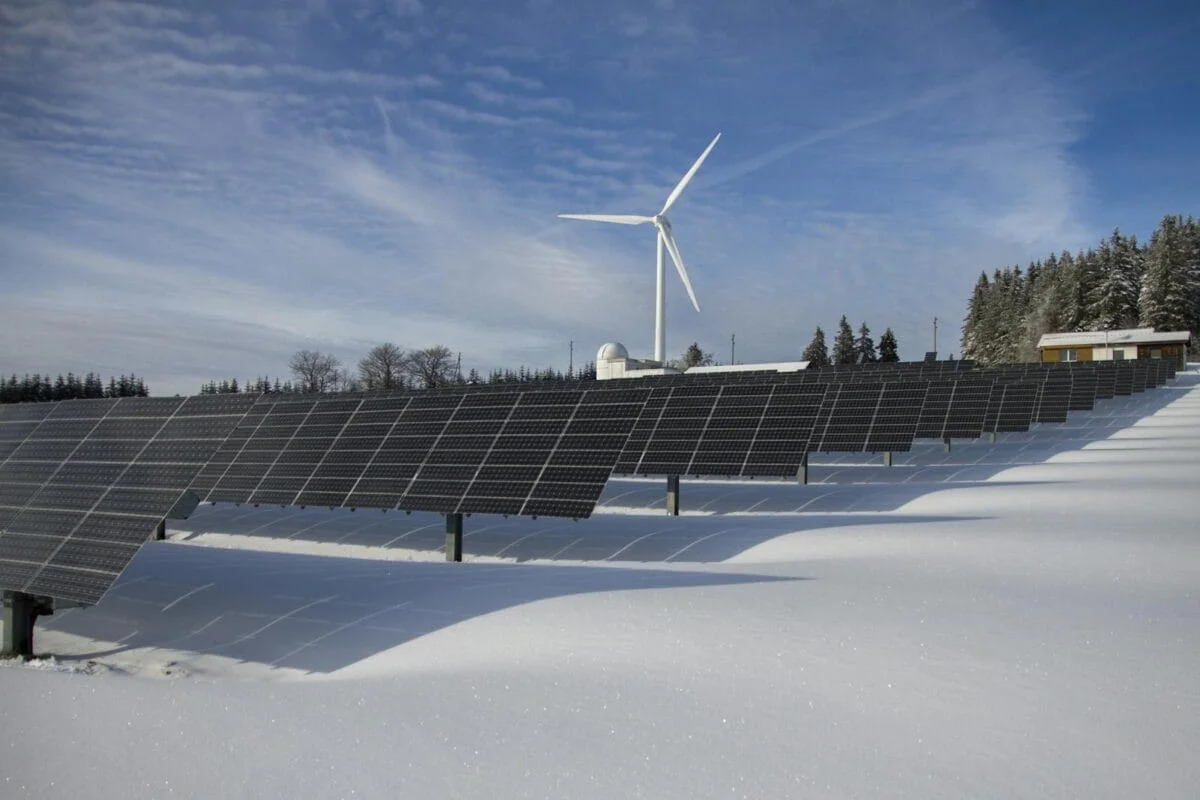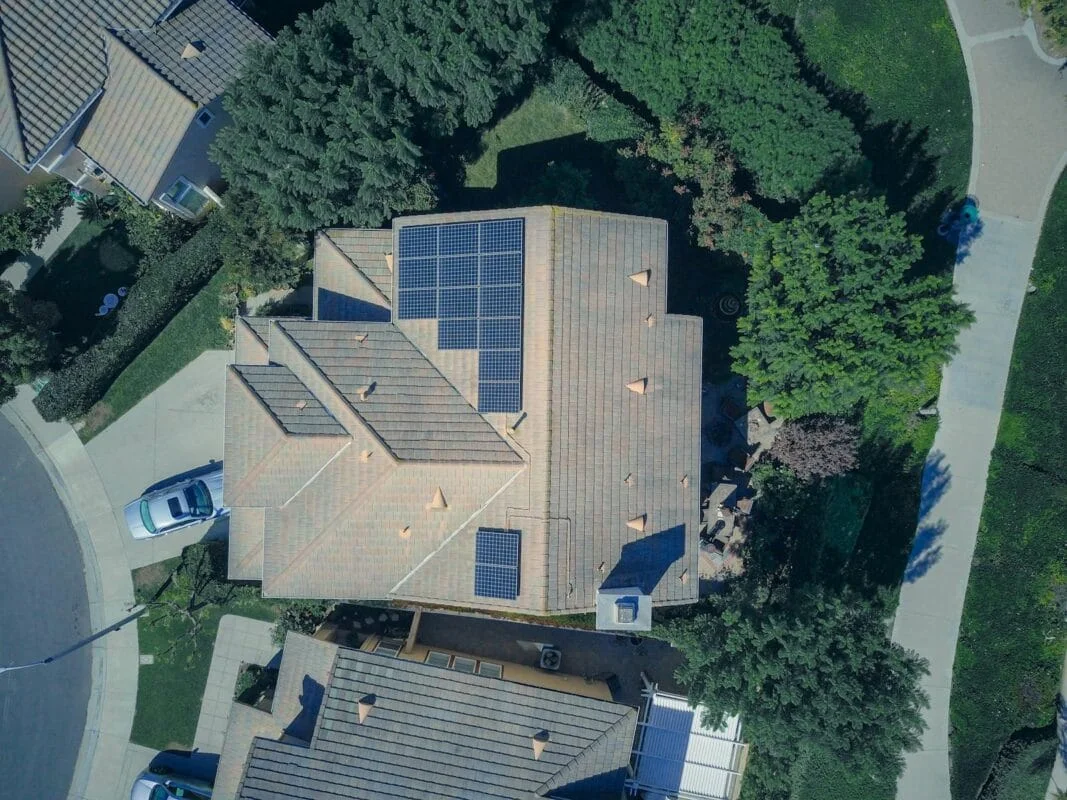Solar technology has seen rapid advancements over the last decade, making renewable energy more efficient, affordable, and accessible. As the demand for sustainable solutions grows, solar energy continues to stand out as a key player in the push toward reducing carbon emissions. Below, we explore some of the latest innovations that are shaping the future of solar power.

1. Perovskite Solar Cells: A New Era of Efficiency
Perovskite solar cells represent one of the most exciting breakthroughs in solar technology. These lightweight, flexible materials are not only cheaper to produce than traditional silicon-based cells but also offer higher efficiency rates. Some perovskite cells have already achieved over 25% efficiency, making them a serious contender in the solar market.
- Advantage: Perovskite cells can be integrated into surfaces like windows and flexible devices, expanding where solar energy can be harvested.
- Innovation: Tandem solar cells, which combine perovskite with silicon, can push efficiency rates beyond 30%, offering enormous potential for future energy generation.
Key Use: Buildings with solar-integrated windows and flexible solar panels on portable devices.
2. Bifacial Solar Panels: Harnessing Both Sides of the Sun
Traditional solar panels absorb sunlight on only one side. Bifacial solar panels, however, are designed to capture sunlight from both sides—directly from the sun and reflected light from surfaces like the ground. In optimal conditions, bifacial panels can increase energy production by up to 30%.
- Benefit: Higher energy output without additional space.
- Best Fit: Snowy or desert regions where ground reflection enhances energy capture.
Key Use: Ground-based installations in areas with high reflective surfaces.
3. Solar Skin Design: Aesthetic and Energy Combined
One of the barriers to solar adoption, especially for residential areas, is aesthetics. Solar skin design technology addresses this by customizing the appearance of solar panels to blend seamlessly with a building’s roof or environment. Whether mimicking roof tiles or meeting specific architectural requirements, solar skin allows solar panels to integrate more naturally with the surrounding design.
- Benefit: Increased acceptance in residential and commercial applications where appearance is a concern.
- Trend: Solar panels that don’t look like panels, increasing adoption in communities with strict aesthetic regulations.
Key Use: Residential rooftops, historical buildings, and commercial properties prioritizing aesthetics.

4. Floating Solar Farms: Taking Solar to the Water
Floating solar farms, or “floatovoltaics,” are an innovative solution that places solar panels on bodies of water. These installations are more efficient than land-based farms due to the natural cooling effect of water, which boosts the performance of the panels. They also solve land-use conflicts by utilizing unused water bodies like reservoirs or lakes.
- Advantage: Up to 10% more efficient than land-based installations.
- Geography: Countries like China, Japan, and the U.S. are leading the adoption of this technology.
Key Use: Reservoirs, lakes, and other large bodies of water where land is scarce or expensive.
5. Solar-Powered Electric Vehicles (EVs): The Future of Transport
The integration of solar technology into electric vehicles (EVs) is no longer a concept of the future—it’s happening now. Some automakers are developing vehicles that charge using embedded solar panels, allowing the car to generate its own power. While these vehicles aren’t yet a full replacement for traditional charging methods, they offer a glimpse into a future where vehicles can significantly extend their range using the sun.
- Key Players: Companies like Lightyear and Sono Motors are leading this movement.
- Potential: Solar panels embedded into EVs can provide additional mileage daily, reducing the need for charging stations.
Key Use: Solar-powered electric vehicles for reducing grid dependence and enhancing mobility.
6. Battery Storage Innovations: Extending Solar Power Beyond Daylight
One of solar energy’s main challenges has always been intermittency—what happens when the sun isn’t shining? Advances in battery storage technology are addressing this issue, making it possible to store excess energy generated during sunny periods for later use. New developments in solid-state and flow batteries promise longer-lasting, safer, and more scalable storage solutions.
- Standard: Lithium-ion batteries are currently the go-to for most solar installations.
- Innovation: Solid-state batteries offer increased energy density, while flow batteries are ideal for large-scale energy storage.
Key Use: Residential and commercial solar installations looking for reliable energy storage.
7. Solar Windows: Energy from Glass Surfaces
Solar windows are a groundbreaking technology that allows glass surfaces to generate electricity. These transparent panels capture sunlight while still allowing light to pass through, making them an ideal solution for skyscrapers and other large buildings in urban environments. Solar windows could soon become standard in energy-efficient construction.
- Benefit: Generates energy without sacrificing natural light.
- Viability: Approaching commercial availability, solar windows can significantly reduce energy costs for buildings.
Key Use: Urban office buildings, residential high-rises, and commercial properties looking to optimize every square meter.
8. Next-Generation Solar Trackers: Smarter Sun-Chasing
To optimize energy production, solar panels need to be positioned correctly to capture the most sunlight. Next-generation solar trackers use advanced algorithms and AI to adjust the angle of solar panels in real-time, following the sun’s path across the sky. This can boost energy production by 10-30% without needing more panels.
- Benefit: Higher energy yield without additional panel installation.
- Application: Large solar farms and commercial installations where efficiency is key.
Key Use: Large-scale solar farms and utility companies looking to maximize energy production.
Why Solar Technology Matters Now More Than Ever
The importance of solar energy is growing as climate change accelerates and energy demands increase. Solar technology offers a cleaner, more affordable alternative to fossil fuels, and innovations are making it more efficient and accessible. From perovskite cells to floating solar farms, these breakthroughs are pushing the boundaries of what solar energy can achieve.

Final Thoughts
The continuous advancements in solar technology are driving the global shift toward renewable energy. These innovations are making solar power more efficient, flexible, and attractive for both consumers and businesses. Whether you’re a homeowner interested in reducing your energy bills or a business looking for greener operations, solar technology offers a wide array of solutions.
Stay informed about the latest trends and explore how these innovations can benefit your energy needs. Solar energy isn’t just a viable alternative anymore—it’s the future of power generation.
FAQs:
- Q: How efficient are modern solar panels?
A: Innovations like perovskite-silicon tandem cells can achieve over 30% efficiency. - Q: Can solar power work in cloudy regions?
A: Yes, technologies like bifacial panels and improved storage solutions allow solar power to work efficiently even in less sunny climates. - Q: How soon will solar windows be available?
A: Solar windows are nearing commercial viability and could become a standard feature in energy-efficient buildings within the next few years.
click here for more


